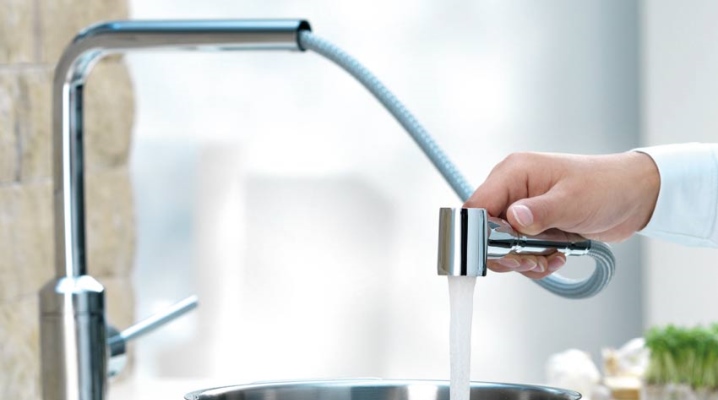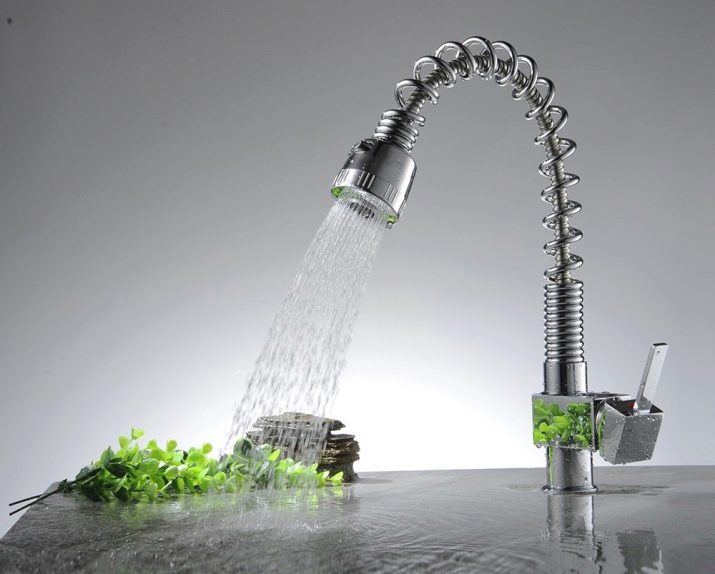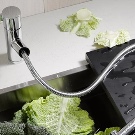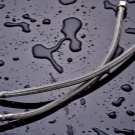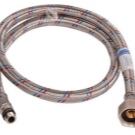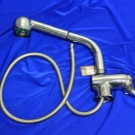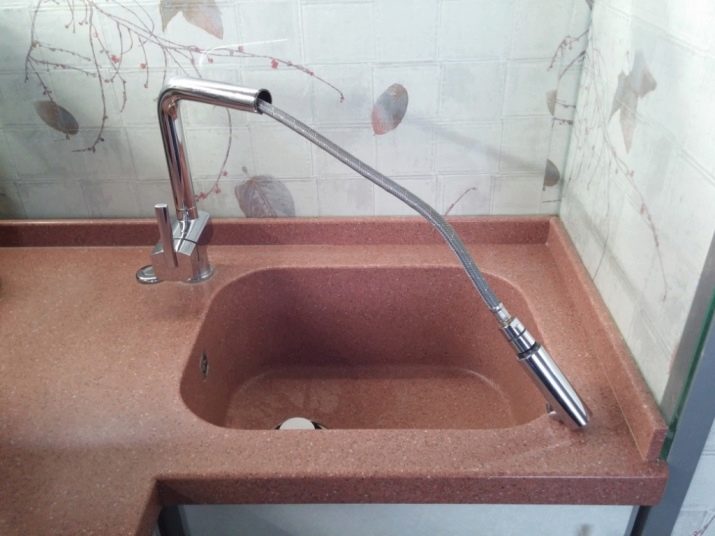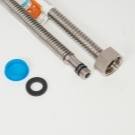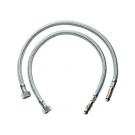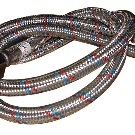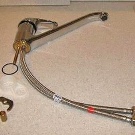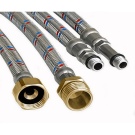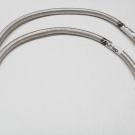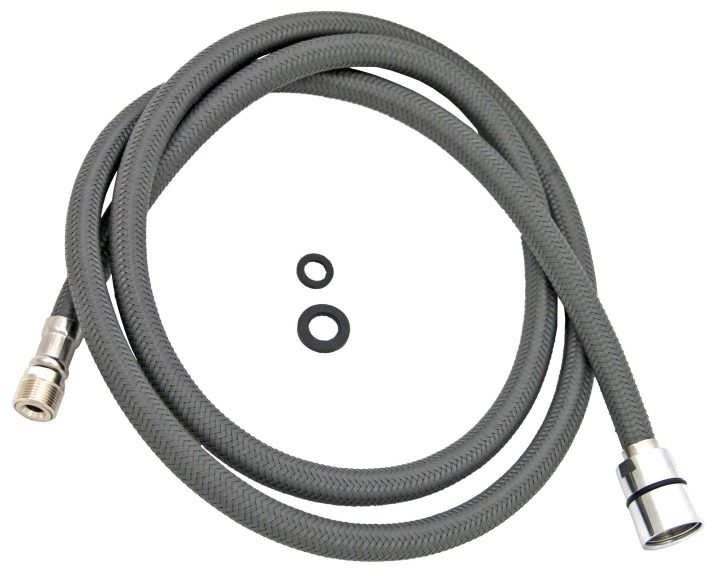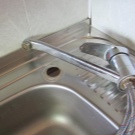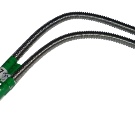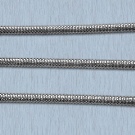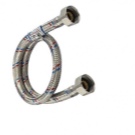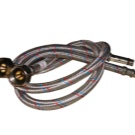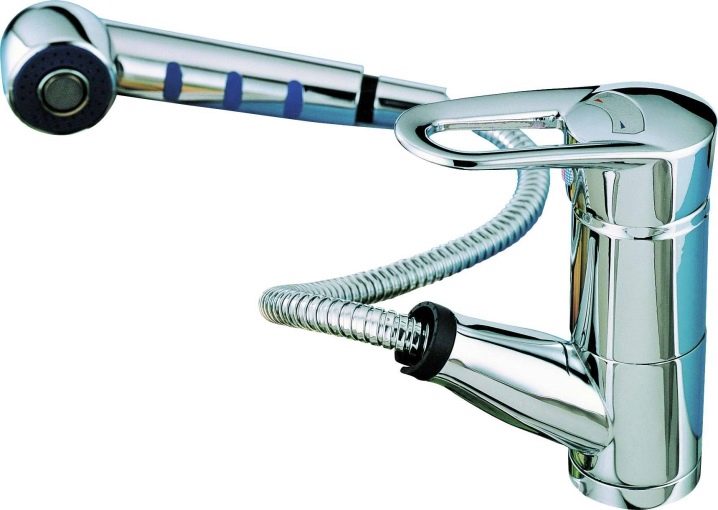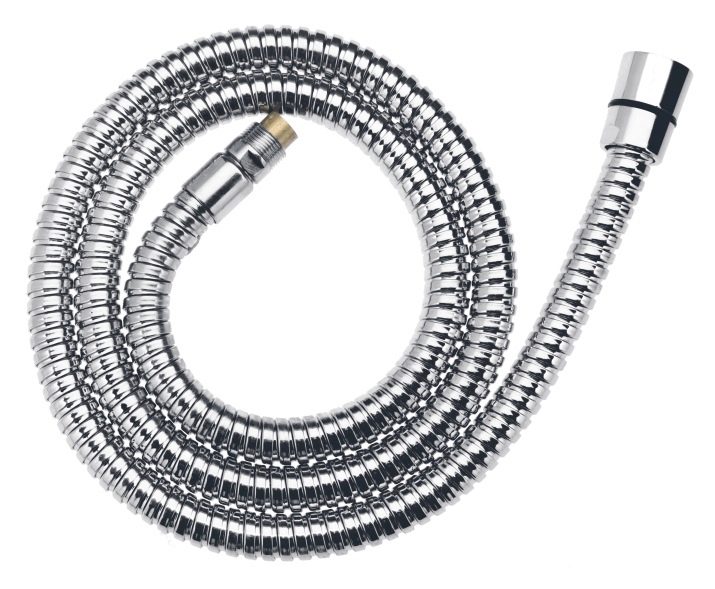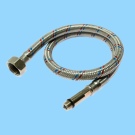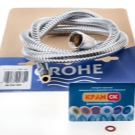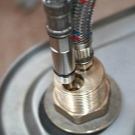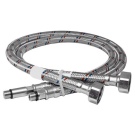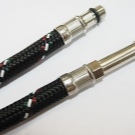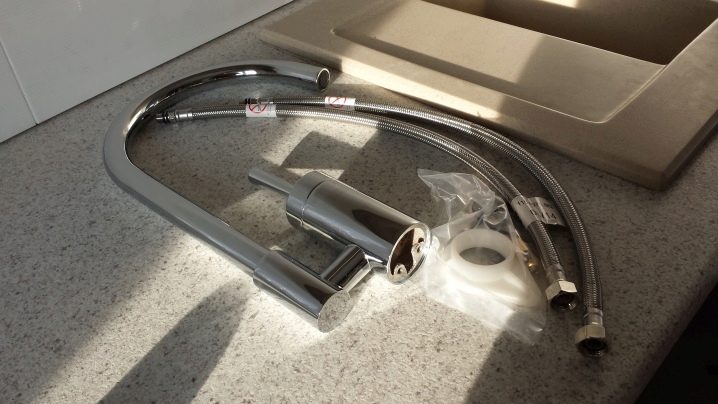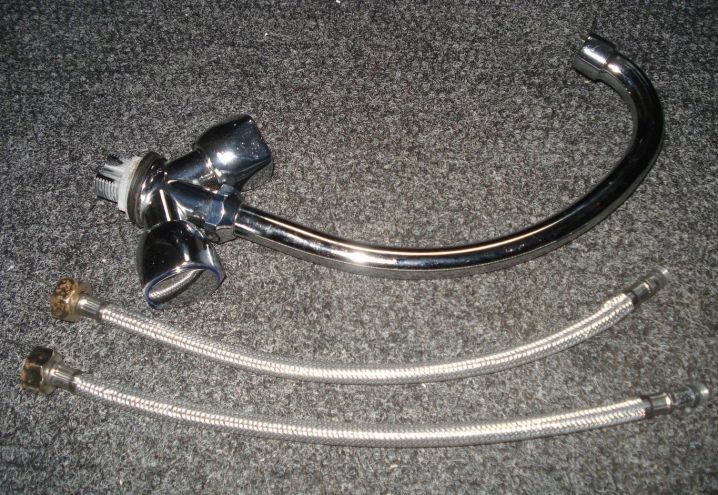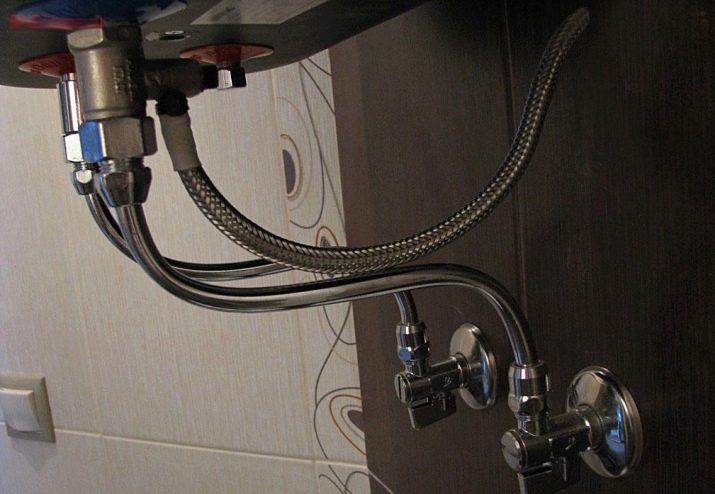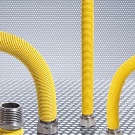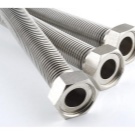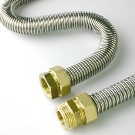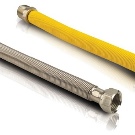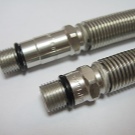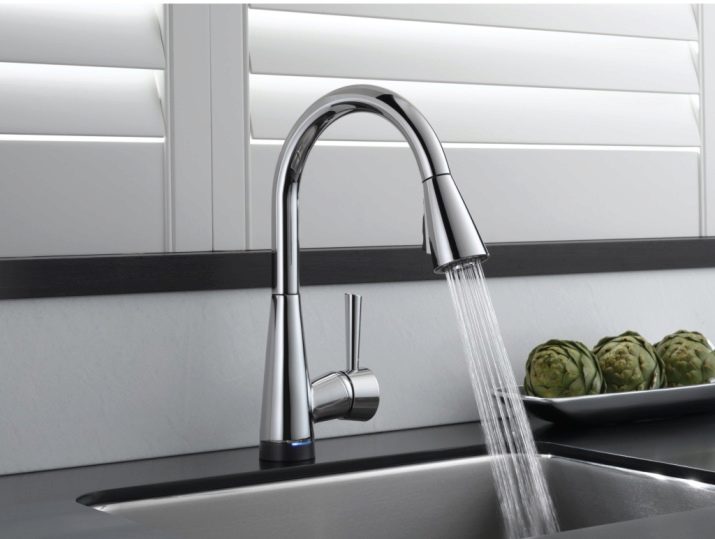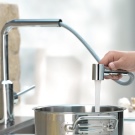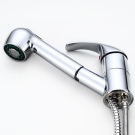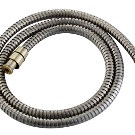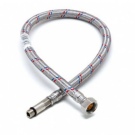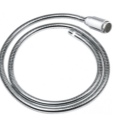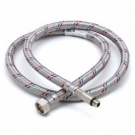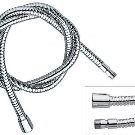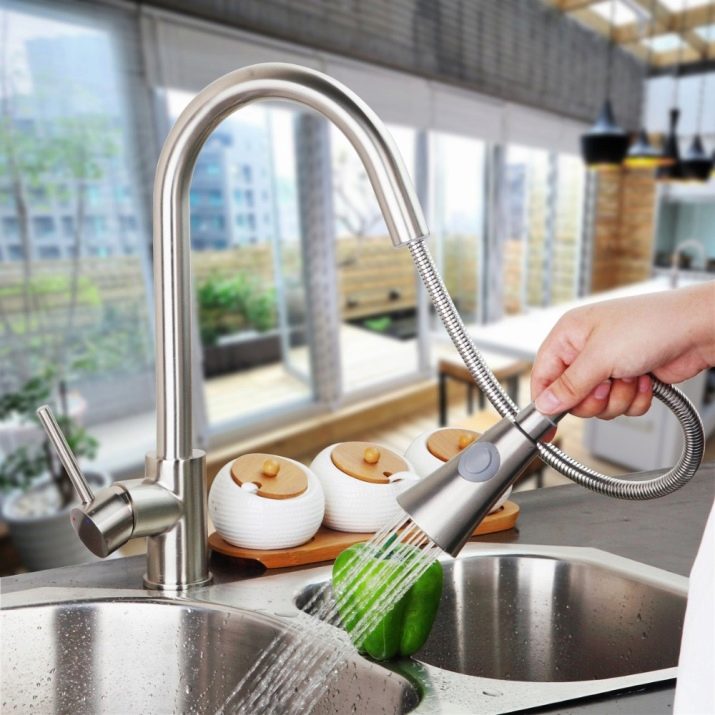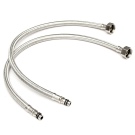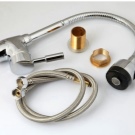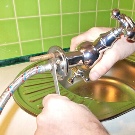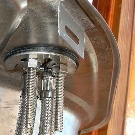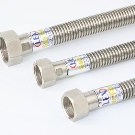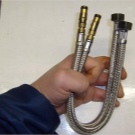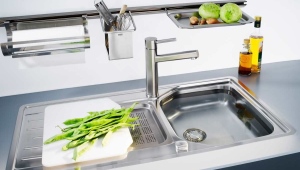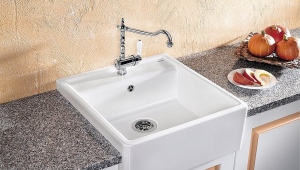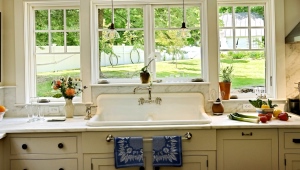Hose for the mixer in the kitchen
The arrangement of the water supply system involves the use of a special connection to the mixer. To solve this problem in several ways, among which one of the most optimal is the use of flexible hoses. Such products allow you to connect mixers, regardless of the relative position of them and the source of water supply.
Design features
The hose for the mixer in the kitchen is a flexible pipe, which is equipped with special connecting structures that allow water to be supplied to the faucet. Such a product consists of several main parts:
- The nut is cap. Used to connect the hose to the water supply. This element is made of nickel-plated brass grades CW614N, UNI-EN.
- Sleeve with special gasket. Brass CW614N and ERDM rubber are also used here.
- Wire braid. This frame is made of steel AISI 304. The diameter of the threads reaches only 0.18 mm, and their number is 8 pieces in one bundle.
- Hose.This part is a flexible pipe that is made of rubber or another similar substance. The length of this part of the hose depends on its specific purpose and can vary over a wide range.
- Crimping sleeve is a construction of steel AISI 304. It can have a different shape, which is standardized for certain types of mixers.
Classification reinforced eyeliner
Hoses for a kitchen mixer on a flexible basis are of two main types:
- Rubber construction. A tube of such material, although it is highly flexible, does not always have quality indicators of strength. Often it depends on the technology and material that the manufacturer uses.
- Rubber hoses are of high quality and reliability. It should be noted that such material is safe for the human body and can be used regardless of the conditions.
When choosing a rubber liner one of the factors indicating a poor-quality product can be an unpleasant smell. Use of similar products for the supply of drinking water is strictly prohibited.
The reinforcing layer of the hose can be made of the following materials:
- Aluminum. The coating of this substance has a short life, as it is oxidized under the influence of moisture.
- Stainless steel. This type of braid is of the highest quality, as the metal perfectly withstands pressures up to 10 atm. and temperatures up to 100 degrees.
- Galvanized wire. This cover is one of the worst and unreliable. The reason for this is the rapid destruction of the metal in a wet environment.
- Nylon. Such braid is used quite rarely and has not found practical application. It should be noted that such coatings can withstand pressures up to 20 atm. and temperatures up to 110 degrees.
Assessing connective products
To understand which type of liner is better to use, you must first evaluate all the positive and negative sides of each of the materials. Among the advantages of rubber hoses there are several distinctive properties:
- With the help of such products you can connect a crane regardless of the location of the extreme points. Hoses perfectly form curved lines that allow you to tailor the structure to different conditions.
- The connector is in a movable state, which allows it to react optimally to thermal expansion without damaging the fixed parts of the product.
- Resistance to hydraulic shocks that can periodically occur in the pipeline.
- Relatively simple installation method, eliminating soldering or welding.
Still, flexible connecting pipelines have several significant drawbacks:
- High probability of destruction of rubber or rubber under the influence of friction about the sheath. One of the weakest points is the point before entering the mixer.
- Short service life of the braid, which directly reduces the resistance of the entire hose. The reason for this is the oxidation of metals and the use of low-quality materials in the manufacture.
- Complete set of disposable seals. Manufacturers of this product use poor-quality rubber, which leads to the destruction of the gasket after re-twisting the hose. This factor must be considered when installing such systems.
Bellows liner as an alternative to rubber
Hoses of this type are very similar in design to reinforced analogues, but they do not contain a rubber or rubber tube inside.A corrugated metal pipe is used here as a pipeline, which is very easy to bend in different directions. Bellows liner has many advantages over its peers:
- Persistence The material perfectly withstands mechanical stress that may occur during compression or fracture.
- The optimal working pressure for such a pipe is a value of 16 atm., Whereas in tests they are able to withstand performance up to 50 atm.
- The life of the hose reaches 25 years, which is several times longer than their rubber counterparts.
- The absence of weak zones, as all fittings are welded to the pipe itself, allowing you to make the system more stable and reliable.
It is possible to use similar products both for kitchen, and for shower. One of the disadvantages of bellows hoses is their high price. Also during operation, they make loud noises, which creates discomfort for a person.
How to choose?
Before you buy reinforced hoses, you must first assess their condition. You can do this by following a few simple guidelines:
- The hose jacket must be smooth and no chipping or otherroughness. If such signs are present, then this suggests that the product is not very high quality.
- The composition of the braid should include colored yarns that indicate the purpose of the product. So, blue color means that the tube can only be operated with cold water. There are universal hoses on which blue and red marks are applied.
- The length of the hoses is chosen in such a way as to eliminate their strong tension. They must be freely suspended and not subject to external loads.
- To check the quality is also important to assess the weight of the purchase. If the construction has a small value, this may indicate that some parts were made not of brass or steel, but of plastic, for example.
Another factor to pay attention to is the size of the nuts (diameter, etc.). This will allow you to choose the right design for your system parameters. If you have chosen a retractable hose design, then it is necessary to take into account the distance from the mixer to the main source.
Replacement Algorithm
Connecting the liner of this type to the kitchen mixer is carried out in several successive steps:
- First of all, the water overlaps and its remains descend. After that, you need to unscrew the old hoses using keys selected by size. Please note that if the installation is carried out for the first time and old structures are missing, this stage can be skipped.
- After that, the hoses are screwed into the grooves of the mixer that are under it. To seal the joint, it is possible to wind a little tow on the thread of the needle, but it should be clamped sparingly, as the gasket can be damaged. Please note that the side responsible for supplying hot or cold water to the mixer depends on which hose you connect to which hole.
- The final step is to connect the pipe to the water source. For this, the nuts are simply screwed onto the thread. This must be done carefully so as not to damage the product and not destroy the gasket.
Flexible hoses are universal designs that allow to solve many problems with which a metal pipe simply would not cope. In order to obtain a reliable system, its installation should be trusted by an experienced specialist.
